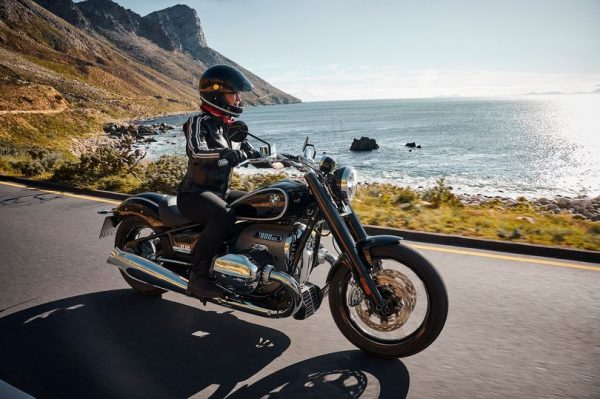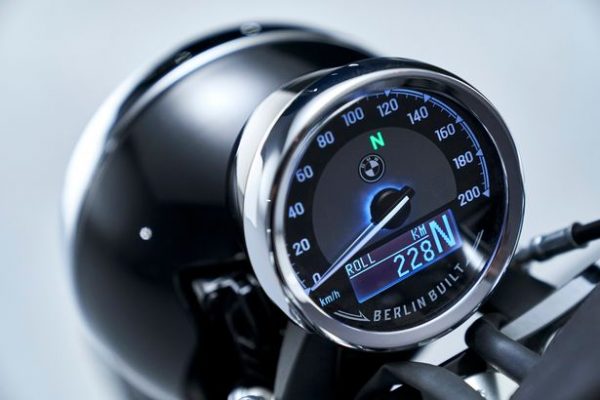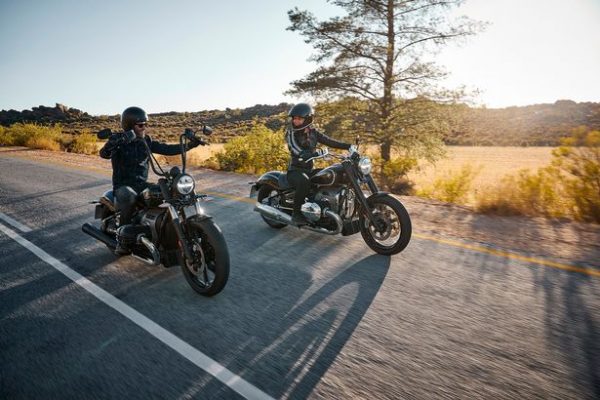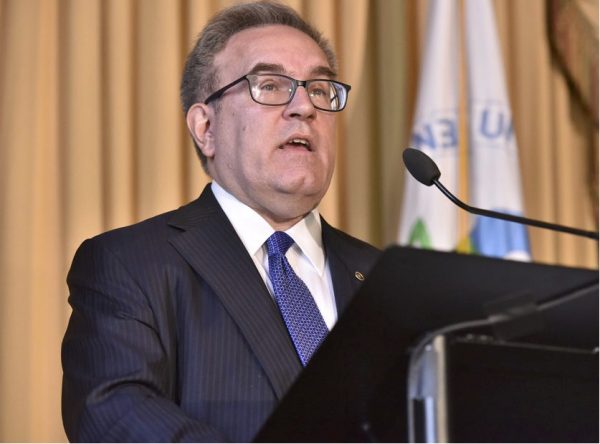THE BILTWELL FINALISTS–Choppers Will Never Die!
By Bandit |
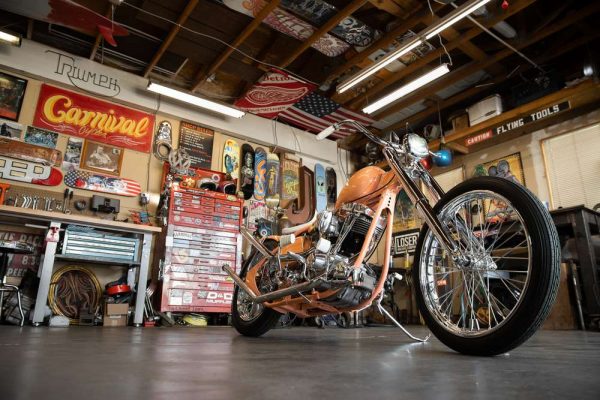 Ryan “Burd” Burdick
Lancaster, California
1974 Harley-Davidson Shovelhead
Instagram: @carnivalburd
YouTube Video
Ryan “Burd” Burdick
Lancaster, California
1974 Harley-Davidson Shovelhead
Instagram: @carnivalburd
YouTube Video
 Luke Heafner
Monroe, North Carolina
1967 Harley-Davidson Shovelhead
Instagram: @_luke_the_drifter_
YouTube Video
Luke Heafner
Monroe, North Carolina
1967 Harley-Davidson Shovelhead
Instagram: @_luke_the_drifter_
YouTube Video
 Steve “Part-Time” Glennon
Denver, Colorado
S&S Panhead
Instagram: @parttimersteve
YouTube Video
Steve “Part-Time” Glennon
Denver, Colorado
S&S Panhead
Instagram: @parttimersteve
YouTube Video

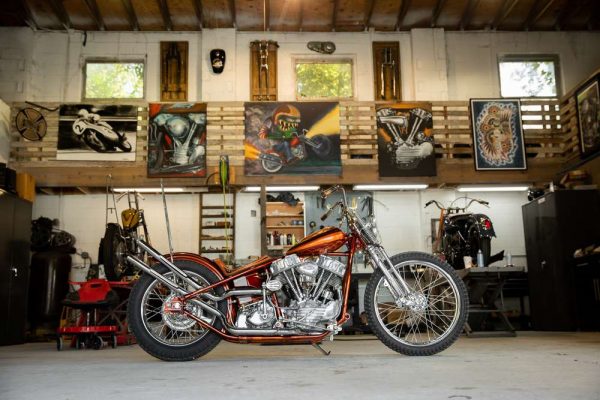 James “Fish” Alcorn
Jacksonville, Florida
1951 Harley-Davidson Panhead
Instagram: @alleywaykustoms
YouTube Video
James “Fish” Alcorn
Jacksonville, Florida
1951 Harley-Davidson Panhead
Instagram: @alleywaykustoms
YouTube Video
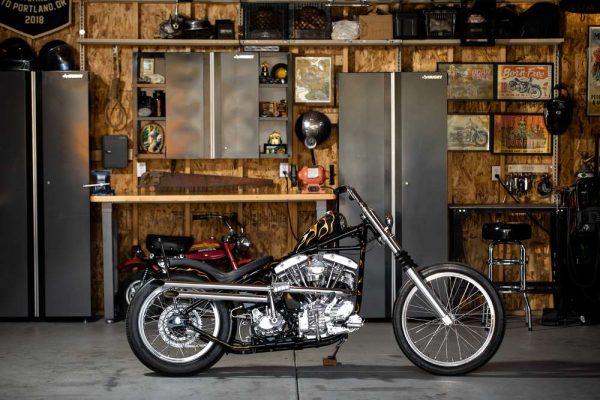 Landon Bateman
Salt Lake City, Utah
1951 Harley-Davidson Pan/Shovel
Instagram: @batescycles
YouTube Video
Landon Bateman
Salt Lake City, Utah
1951 Harley-Davidson Pan/Shovel
Instagram: @batescycles
YouTube Video
 Steven Bate
Birmingham, Alabama
1981 Yamaha Virago 920r
Instagram: @dixiana_co
YouTube Video
VOTING WILL BE LIVE ON THIS PAGE NOVEMBER 6th. – 9th. WE WILL ANNOUNCE THE CHAMP THE NEXT DAY, NOVEMBER 10th.
The Champ will win $10k plus a special spot at next year’s Born-Free in Southern California.
Thank you!
Steven Bate
Birmingham, Alabama
1981 Yamaha Virago 920r
Instagram: @dixiana_co
YouTube Video
VOTING WILL BE LIVE ON THIS PAGE NOVEMBER 6th. – 9th. WE WILL ANNOUNCE THE CHAMP THE NEXT DAY, NOVEMBER 10th.
The Champ will win $10k plus a special spot at next year’s Born-Free in Southern California.
Thank you!
Enter the 2021 Biltwell People’s Champ
The goal of the People’s Champ competition is to get exposure for builders who might not have been well-known enough to be official “Invited Builders” at Born Free. There is so much talent out there, it’s impossible for the BF guys to know everyone, and lots of People’s Champ competitors have gone on to compete in the big show the following years. We’re not promising anyone fame and fortune, but we’ll do our best to showcase your craftsmanship, and the democratic process will determine the final Champ. Open for submissions – Now! Submissions close – November 27 Announce OG25 Builders – December 11 Click here to read the rules of entry and throw your name in the hat! Best of luck!Harley-Davidson Vader’s Fist Custom Build
By Wayfarer |
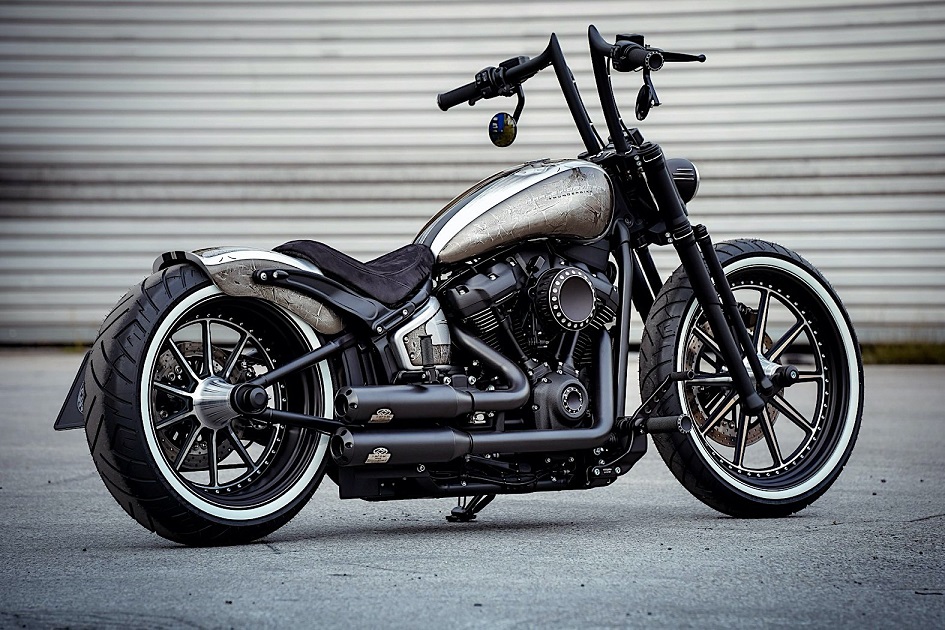
by Daniel Patrascu from https://www.autoevolution.com
There are Star Wars fans, and there are Harley-Davidson fans. Somehow, these two categories don’t seem to mix very well, and this is why we don’t get all that many custom builds inspired by the George Lucas’ imaginary universe.
That’s also why our minds light up whenever a Harley-Davidson custom build dedicated to Star Wars pops up. And one just did, courtesy of our favorite German specialized garage, Thunderbike.
One of the garage’s customers, owner of a Street Bob, asked for this special build to be made. Called Vader’s Fist, the finished project is both a nod to Star Wars, and a testimony of what the German shop can do given the liberty.
Riding on 21-inch and 18-inch wheels wearing Shinko whitewall tires, the bike is a visual candy. Wrapped in a matt hues, it blends white and silver, but also black, to create a very solid appearance.
The main element of the build is however the fuel tank. The 15-liter piece of stretched aluminum features up top the split helmet of a Stormtrooper, making the Street Bob distinctively unique in the world of Harley-Davidsons.
As usual, the visual appearance is not the only aspect of the motorcycle that has changed. There are mechanical upgrades as well, designed to fit in with the theme of the project.
There’s a whole new front end with modified fork, triple tree, and speedo, an air ride suspension kit, and Streetfighter mufflers from Dr. Jekill & Mr. Hyde for the black exhaust system with short manifolds, among others.
As usual, Thunderbike does not say how much the build cost to make, but we did the math on the parts they used and came up with at least 15,000 euros. That’s around $17,500, more than the price of the base bike, and not including the man hours, special graphics, and probably some other hardware we were not told about.
Reimagined Triumph Thruxton 900
By Wayfarer |
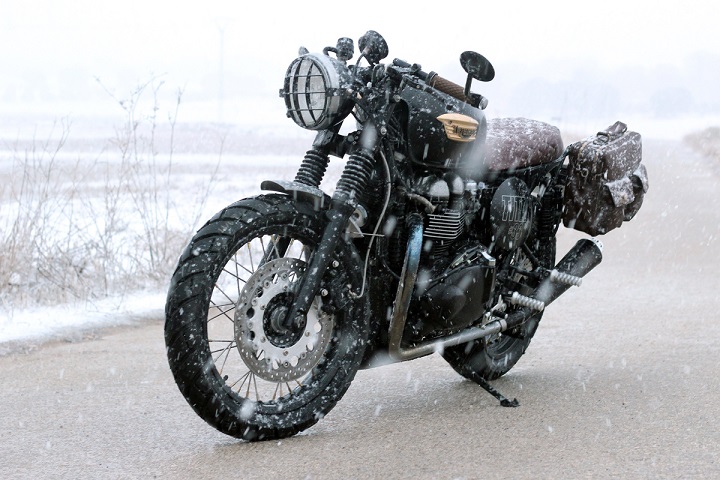
by Silvian Secara from https://www.autoevolution.com
The Titan Is Tamarit Motorcycles’ Reimagined Triumph Thruxton 900
You ought to pack your bags, because we’re just about to embark on yet another bespoke adventure!
Look, the magicians over at Tamarit Motorcycles are no strangers to the fascinating art of motorcycle customization. Ever since its birth, the enterprise stacked up on a plethora of aftermarket components for countless brands, as well as several bespoke masterpieces that’ll soothe just about any gearhead’s soul.
A little while back, we visited the workshop’s portfolio to examine a staggering two-wheeled entity, based on Triumph’s almighty Bonneville. This time around, we’ll be proceeding with a quick analysis of Tamarit’s achievements on a breathtaking Thruxton 900 from Triumph’s range. The overhaul was concluded at the start of 2018.
The donor in question is brought to life by an air-cooled DOHC parallel-twin powerplant, with four valves per cylinder head and a healthy displacement of 865cc. It is capable of delivering up to 68 hp at 7,250 revs, along with 53 pound-feet (72 Nm) of monstrous twisting force at around 5,750 rpm. A five-speed transmission feeds this power to a chain final drive. Ultimately, the whole shebang leads to a quarter mile time of 13.2 seconds, while top speed is rated at 115 mph (185 kph).
Tamarit kicked things off by removing the bike’s original side panels to make room for their very own custom counterparts. They also went about installing a solid belly pan module and one rugged headlight grille that does a neat job at looking seriously rad.
Thruxton’s stock tail section and saddle unit were swapped out in favor of a two-seater quilted leather item, which rests on a one-off loop-style subframe. The seat in question was meticulously upholstered by the Spanish specialists in-house.
In terms of performance upgrades, the parallel-twin leviathan’s ECU was remapped to suit a set of reverse megaphone mufflers. You will also find top-grade Ohlins Black Line shock absorbers that’ll handle rear suspension duties without breaking a sweat and an assortment of Motogadget parts, such as a fresh speedometer, bar-end turn signals and a state-of-the-art M-unit that keeps the electrics going.
Lastly, this spectacular beast was nicknamed the Titan. And there we have it, folks. What are your thoughts on Tamarit Motorcycles’ one-off goodness?
Love at first sight: The retro BMW R18 is Geoff’s new favourite bike of all time
By Bandit |
The Bavarian company’s new cruiser is even more gorgeous in the flesh than it is in photos, and a joy to ride. Our man Hill returns from a day in the sun on it deeply in love and with a smile as wide as those two mammoth cylinders
By Geoff Hill, Mirror, England
This time around, BMW has taken inspiration from the lovely 1936 R5, and kept its simple and exquisite look, but super-sized everything else, with the R5’s 494cc, 24bhp and 165kg becoming a whopping 1800cc, 91bhp and 345kg.
That could have resulted in it going from young Marlon Brando to old Marlon Brando, but it hasn’t: it looked stunning in photos, and when I walked up to it in the sun at the dealers, it was all I could do not to swoon with Stendhal Syndrome, named after the French author who was so overcome by the beauty of Florence on his first visit that he fainted regularly and had to be revived with several large glasses of brandy.
I could have stood there and looked at it until the cows came home, although where those cows had got to is a mystery. Maybe being in the middle of a city had something to do with it.
Pulling myself together, I decided to sit on it and make a list of all the things I loved about it, starting at the front with the single classical headlight, and above it a single speedo with the minimum information you need – speed, gear, miles and which mode you’re in – Rock, Roll or Rain.
The old school circular mirrors are perfect, as is the ferruled chrome filler cap, the classic black tank with ivory coach trim, the boxer cylinders which somehow manage to be both massive and tasteful, the fabulous blossoming curve of the exhausts and the exposed shaft drive. How BMW got that past health and safety is a mystery.
Even after that, it took me half an hour to get away, what with people coming up to admire it.
Start up, it kicks to one side just to remind you it’s a BMW boxer, and the air fills with a gloriously subterranean grumble.
Ride off, click through the solid six-speed box, drink your fill from a well of torque so bottomless that it hardly matters which gear you’re in, and laugh at handling so effortless that even on a bike weighing 345kg, before long you’re swinging through bends as instinctively as if you and the bike are one.
Even at low speed, full lock turns are child’s play.
If I have to throw tiny pebbles of fault in the mirrored lake of perfection, there’s no fuel gauge, just a warning light which comes on when you’ve 25 miles left, and the combination of a fairly firm seat and short travel rear suspension means getting off for a stretch every hour or so…
You can even get it with highbars. See the whole story at mirror.co.uk
EPA Asks DOJ Whether Green Groups Should Register As Foreign Agents
By Bandit |
Environmental Protection Agency Administrator Andrew Wheeler said Monday he would ask the Justice Department to look into whether environmental advocacy groups receiving overseas funding should register as foreign agents.
His letter on enforcement of the Foreign Agents Registration Act (FARA) came in response to a request from Rep. Lance Gooden, Texas Republican, who raised concerns this month about overseas entities seeking to increase U.S. reliance on renewable energy by funding the environmental movement.
“Given heightened concern that foreign countries, primarily China and Russia, are potentially funding U.S.-based ‘green’ groups to undermine American energy independence and to help maintain the integrity of EPA’s decision-making, EPA will refer this matter to the DOJ FARA Unit,” Mr. Wheeler said in his letter.
“The DOJ can then determine what appropriate steps to take, if any, including whether those entities should register as a foreign agent,” Mr. Wheeler said.
It is legal for U.S. nonprofit groups to accept foreign contributions, but “foreign influence should not be covert,” Mr. Wheeler said.
Mr. Gooden, who had raised the issue of “covert foreign influence on our political process” in an Oct. 8 letter to Mr. Wheeler, praised the administrator’s decision.
“The Chinese Communist Party (CCP) stands to profit heavily from a Biden administration which would make us reliant on Made-in-China renewable energy,” Mr. Gooden said in a Monday statement. “We have reason to believe they are funneling money to certain ‘green groups’ to influence American foreign policy and our elections.”
His previous letter said there was “considerable evidence” that environmental groups actively lobbying for clean-energy policies are being funded by foreign entities that would benefit from a U.S. shift away from oil, natural gas, and coal.
Mr. Gooden said that environmental nonprofit groups, which are not required to disclose their donors, are receiving “large sums of money” from the Sea Change Foundation, “a proven front group for foreign financing, funded by off-shore hedge funds in Bermuda.”
“While it is not illegal for tax-exempt 501(c)(4)s to receive funding from foreign countries, the Foreign Agent Registration Act (FARA) stipulates that any foreign-funded organization engaged in political activity must register as a foreign agent,” Mr. Gooden said.
“Environmental groups that receive money from Sea Change or other foreign-funded organizations, who then use those funds to target American energy interests, should disclose the source of their funding and potentially register as foreign agents.”
He added that such green groups “are clearly engaging in politics at best, and operating at the behest of foreign actors at worst.”
The Sea Change Foundation, formerly Klein Ltd., released a statement in July 2018 saying that it had contributed $500 million since 2011 to climate and clean-energy initiatives but received no outside funding.
“I wish to clarify that press reports speculating that Klein has received funding from outside sources are factually incorrect and have no basis,” foundation director Nat Simons told Inside Philanthropy. “Neither Klein nor Sea Change Foundation has ever solicited or accepted contributions from non-family related sources.”
China has positioned itself as a renewable-energy juggernaut, with control of about 60% of global solar-panel production and 90% of rare-earth metals used in electric vehicles, wind turbines, and solar panels, as reported by ChinaPower.
During the Trump administration, the U.S. became a net exporter of crude oil and natural gas, thanks in large part to the energy boom driven by hydraulic fracturing.
–Read more in the Washington Times
–from the Climate Depot
Why Harley-Davidson Closed Shop in India
By Wayfarer |
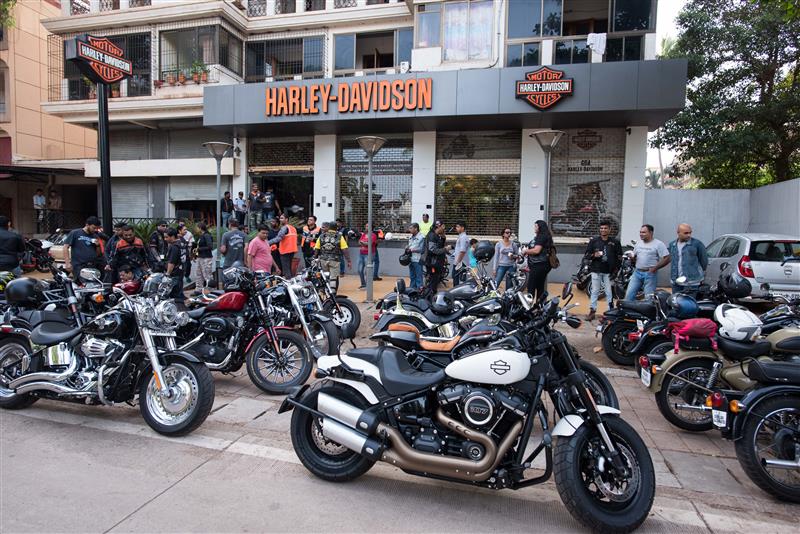
From Ground-Zero of a Marketing Failure
Is there a market for big bikes in India? All the big names have dealerships here in India – Triumph, Indian, BMW, Yamaha, Kawasaki, Honda and now some Italian brands too. India is the world’s largest market for two-wheelers overtaking China. Motorcycles and scooters can be seen everywhere in every city, suburbs and villages. It is the most popular choice of transport for the common man. Why would one of the world’s most popular brands decide to shut shop in India after spending a decade building dealerships and relationships?
Harley-Davidson came to India before Indian and Triumph set foot here. In a way their sales figures induced other motorcycle brands to sell their larger models in India. Before Harley-Davidson the Japanese giants Honda, Yamaha, Kawasaki and Suzuki did not consider bringing their superbikes to Indian dealerships. They were content with their small commuter bikes and scooters selling in large numbers. So how does the trailblazer brand decide they don’t like what they have accomplished?
The answers are complex and the answers may be closer to home in US of A than in India.
CLICK HERE to read this Report on Bikernet.
Join the Cantina – Subscribe Today.
https://www.bikernet.com/pages/custom/subscription.aspx
Here’s What It Takes to Drag Race a Harley-Davidson LiveWire
By Wayfarer |
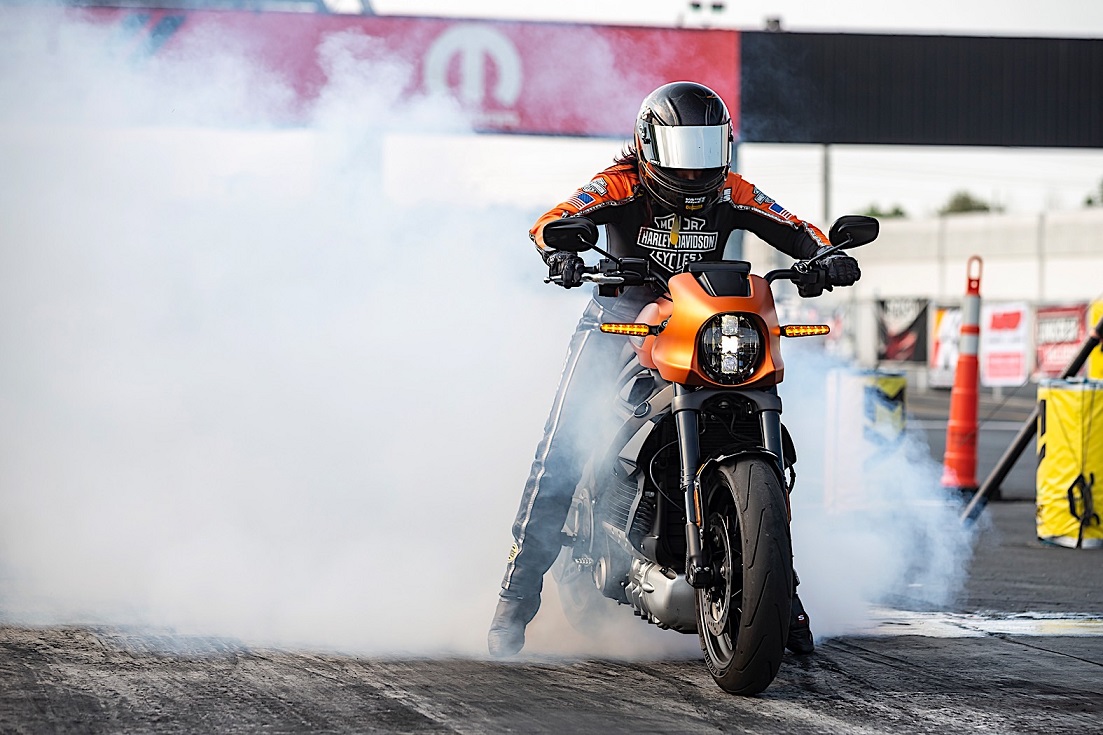
by Daniel Patrascu from https://www.autoevolution.com
Electric cars have been around for about a decade now, but electric motorcycles are sure taking their sweet time to come into existence. There are a number of startups in the market of making electric two-wheelers now, but the established names of the industry are just beginning to dip their toes into the segment.
To date, only one of these established names has ventured into the electric motorcycle sector: Harley-Davidson. Its LiveWire came into the spotlight last year, and came with high hopes in tow. Hopes that, for better or worse, are yet to be met.
The LiveWire is not killing it sales-wise, and Harley knows it. That’s why the bike maker embarked on an intensive effort to promote the EV through unconventional means.
First, Harley handed two of them (modified) to Ewan McGregor and Charley Boorman for their 13,000 miles (21,000 km) trip from the city of Ushuaia in Tierra del Fuego all the way to Los Angeles, captured on film under the name Long Way Up. Apparently, the bikes not only survived, but they also handled their jobs beautifully.
Then, the company took the LiveWire to the Denso Spark Plugs NHRA U.S. Nationals at the Lucas Oil Raceway in Indianapolis for some live audience action. There, rider Angelle Sampey (who usually rides an FXDR Pro Stock) accelerated the LiveWire to the records of best elapsed time and top speed for an “electric-powered production motorcycle on a drag racing course.”
Following the run, Harley became even more convinced electric drag racing is definitely the future in the motorcycle world. So the company released a dedicated episode of its Science of Speed YouTube series, describing “the mental and physical techniques used by top racers” before, during and after the race.
“Let me tell you what’s amazing,” said Sampey about her experience with the electric bike. “That was the first time I rode the LiveWire. I could not wait to get it on the track. The LiveWire is so easy to ride. Just twist the throttle and go – and you really go!”
You can have a look at the 10-minutes clip below.
Motorcycles and motor scooters in high demand as car sales tank in Alberta
By Wayfarer |
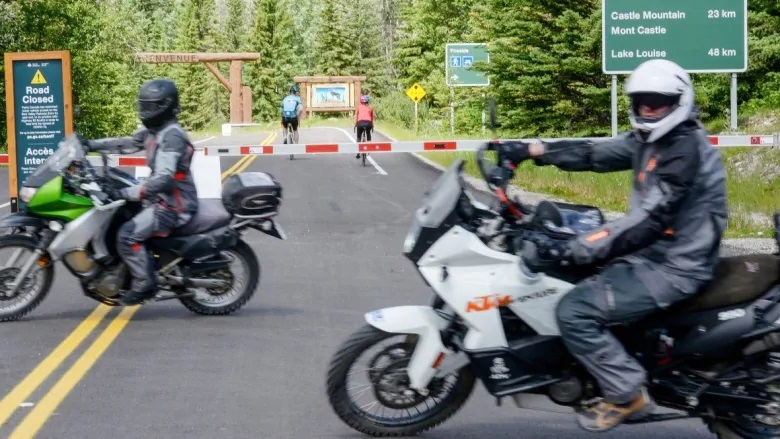
by Helen Pike from https://www.cbc.ca
Instead of sitting at home when the pandemic shuttered Alberta’s economy, some hopped on the saddle of a motorbike and hit the streets.
According to statistics provided by the Motorcycle & Moped Industry Council (MMIC), sales across the province started to climb in April and May and peaked mid-summer. Year to date motorcycle sales are up 16 per cent and motor scooter sales are up 14 per cent over last year’s figures.
Meanwhile, new vehicle sales are down about 26 per cent compared with January to August 2019, according to Statistics Canada.
David Grummett, director of communications, said MMIC believes there was a healthy mix of new riders, returning riders and existing riders with some with vacation money burning a hole in their pockets.
“There were a lot of new riders,” Grummett said “[There were people coming] back to the sport in big numbers … there were just people that wanted a new bike and maybe they weren’t going on the cruise. So they had some extra disposable cash. That seemed to be a good place to put it.”
Jen Brown hadn’t been on a bike for a decade. She had taken a course and always intended to have a motorcycle of her own, but life got in the way. Until the pandemic hit.
Then she found herself with extra cash usually set aside for rec-sports leagues and camping trips. So, she got a second-hand beater and, on her first solo ride, met a community of people by chance, on her first ride to Bragg Creek.
‘Everybody stepped up’
“Quite honestly, it’s what kept me sane all summer long,” Brown said. “The group became more and more eclectic, And we all sort of supported each other and helped each other out.”
After that, she was able to message the group for a ride at the drop of a hat. She even went on a road trip vacation with one of the members, who is now her boyfriend.
Brown said the motorcycle community was very supportive over the summer — she described the sport as the “perfect form” of physical distancing.
Because testing wasn’t possible during the first few months of the pandemic — and to ride without a Class 6 licence, you need to be accompanied by a fully licensed driver, social media threads were full of new riders, or unlicensed riders, looking for help.
“Everybody stepped up,” Brown said. “On a lot of the [social media] pages, you could see people asking for somebody who has a Class 6 to chaperone them so that they could practise their riding and they would get seven or eight responses from different people.”
Carter Hansen said he already had a motorbike but it needed repairs before he could dust it off.
He works in the aviation industry and knew a layoff was on the horizon — so instead of wallowing, Hansen said he took himself shopping.
“I made the decision to kinda make the best of my newly found free time,” Hansen said. “I figured if I just sat around and watched my savings and severance dwindle away, it would be very depressing.… Having a new bike that I didn’t have to work on before I could go ride it, helped keep my mental health afloat by giving me something to look forward to. Something to focus on.”
Then, there’s the faction looking for a way to commute safely.
Grummett said scooter sales are up 14 per cent, year to date, over 2019.
Commuting by scooter instead of transit
“People can really easily get on a 50 cc scooter and be-bop into town and not have to worry about sitting beside somebody that is masked and hacking and coughing and stuff,” Grummett said. “So we see that as a really positive thing going forward with the motorcycle industry.”
Interestingly, mini bike sales went through the roof in June, up 319 per cent over 2019 figures. Grummett attributes this to parents trying to keep kids out of the house, especially in rural areas.
“Dealers said basically, you know, a lot of rural kids that maybe their life was playing hockey, baseball, soccer or whatever, [now they] can’t do it,” Grummett said. “And they’re driving the parents nuts.”
While sales climbed, so did fatalities
The Alberta Motorcycle Safety Society tracks crashes across the province. President Liane Langlois said this summer fatalities nearly doubled — with 21 so far, compared with 11 last year.
Over the last number of years, Langlois said fatalities were trending down, so this increase is especially disheartening.
“I always like to see growth in the motorcycle community,” Langlois said.
“People are getting into it because they really enjoy that feeling, that freedom, that being out on the open road. That’s great. Get involved. It’s awesome. Just to make sure that you’re set up for success and not going to become one of these unfortunate statistics.”
Most of the fatal crashes, 70 per cent, were single-vehicle collisions.
Why Harley-Davidson Closed Shop in India
By Ujjwal Dey |

Is there a market for big bikes in India? All the big names have dealerships here in India – Triumph, Indian, BMW, Yamaha, Kawasaki, Honda and now some Italian brands too. India is the world’s largest market for two-wheelers overtaking China. Motorcycles and scooters can be seen everywhere in every city, suburbs and villages. It is the most popular choice of transport for the common man. Why would one of the world’s most popular brands decide to shut shop in India after spending a decade building dealerships and relationships?
Harley-Davidson came to India before Indian and Triumph set foot here. In a way their sales figures induced other motorcycle brands to sell their larger models in India. Before Harley-Davidson the Japanese giants Honda, Yamaha, Kawasaki and Suzuki did not consider bringing their superbikes to Indian dealerships. They were content with their small commuter bikes and scooters selling in large numbers. So how does the trailblazer brand decide they don’t like what they have accomplished?
The answers are complex and the answers may be closer to home in US of A than in India.

DOMESTIC VS INTERNATIONAL
Harley-Davidson has the biggest market share in USA, but it has been in steady decline for over a decade. They are losing market share to brands such as Indian, Triumph and the sport bikes from Japan. Harley-Davidson was the first choice for Americans when they thought of buying a motorcycle, but not anymore. They are getting expensive and not as stress-free as say a Honda GoldWing.
When the international sales of Harley-Davidson increased due to the brand’s iconic association with America and Freedom – the company knew they could boost sales globally. Europe, Middle-East, Asia and Australia were good export markets for Harley-Davidson which sold their bikes based on the cult following the brand developed with extra thanks to Hollywood’s iconic movies that showcased the macho image of a biker on a big V-twin.

This boosted exports for Harley-Davidson even though the sales in USA were slowing down. Then the tariff war with Europe and Asia appeared and Harley-Davidson realised they would have to cut jobs locally and setup factories overseas. The tariff war was essential to boost manufacturing sector in USA, which would be crucial for the economy in the long-term. But in the short-term it impacted Harley-Davidson financially. Their bikes were suddenly more expensive in key market of Europe.
Other motorcycle brands have no problem setting up factories all over the world. Japanese brands build locally and enjoy increased sales at low prices for customers and export to neighboring nations. But the whole point of buying a Harley-Davidson was that it was Made in USA. I have two Zippo lighters and the only reason I bought them was that they are only made in USA, till today. So, while people all over the world want a piece of Americana – Harley-Davidson found it difficult to deliver. What’s the point of owning a Harley-Davidson made in Thailand? Where is the heritage and the history?
In a global economy, brands such as Harley-Davidson face a unique obstacle. They want to hold on to their brand value while competitors entice customers with lower prices, fuel-efficiency with similar range of models to choose from.

BRAND POSITIONING
Harley-Davidson used to be the bike that the common folk rode. They went to work by this bike and went to festivals and weekend getaways on this bike. The custom motorcycle market was obsessed with Harley-Davidsons. The custom builder community helped enhance the core market of the brand and made it uniquely all-American.
Yet, advertising by Harley-Davidson did not feature this core fan-base. They instead gifted Harley-Davidson motorcycles to celebrities to entice the young people who had not considered buying motorcycles. The biker lifestyle does not live in Hollywood. But the marketing team focusses only on celebrities instead of developing the vast core fan-base who appreciate the brand and its history.

Making an expensive electric Harley-Davidson LiveWire that can’t tour does not help boost sales. The Wall Street banker is not the core market. The market resides in practical hardworking man who tinkers in his garage to ride cross-country for experience of true freedom.
To capture the minds of the new generation, Harley-Davidson needs to think about the daily needs of the biker and not the guy who drives a Porsche to work everyday. Harley-Davidson shouldn’t focus on being a luxury product like an Italian car. Their success was always about being accessible to the common man.

COMPETITORS
Indian and Triumph have steadily grown in India, while competing against sports bikes from BMW, Yamaha and Kawasaki. They all have far fewer dealerships than Harley-Davidson in India. The market for touring bikes is captured by the British icon Royal Enfield which is now an India based company.
Royal Enfield set its sights on exporting to Europe and USA and has steadily increased dealerships globally to cater to a new audience. Enfield motorcycles range from 350cc to its new twin engine 650cc. They recently discontinued their 500cc which was also popular for many decades. These are smaller manoeuvrable bikes that are comfortable riding in busy city streets as well as open highways. They recently launched Build-Train-Race program for women riders in USA.

Indian motorcycles by Polaris consistently delivered on performance and quality. They keep sweeping the podium in flat-track racing. For many Americans to buy American often now means riding an Indian rather than a Harley-Davidson.
MotoGP is popular in India where the sports channels show Grand Prix but not the American Flat-Track Racing. People know the names of European riders and champions but don’t hear of American racing legends. This was an easy boost to the Japanese superbikes to sell their big bikes to speed-obsessed fans.

Bike events and custom-culture are not common in India. Most people ride stock bikes and don’t intend to spend on custom parts when they already spent a lot of money to buy the original bike. Biker clubs that exist are exclusively for Enfields. A Harley-Davidson Sportster costs ten-times more than a Royal Enfield Interceptor 650 in India. Can you imagine a bunch of rich guys going cross-country on a Harley-Davidson when they could fly there first-class and stay in a five-star hotel instead of camping by the road. The price was a major deterrent for true bikers to graduate to a Harley-Davidson. Meanwhile Royal Enfield upped its game to bring new models with retro styling that appealed to the growing biker lifestyle community.
Harley-Davidson never launched its Street 500 in India. It could have cut into the Enfield market share and riders would have transitioned to the bigger engines eventually. Street 750 was selling well and introducing Street 500 would have seen the sales figures for India market shoot up easily.

MARKET IN INDIA
While India remains the world’s largest market for two-wheelers the bulk of the sales is for small capacity commuter bikes. These are 100c to 150cc engine bikes that consume very less fuel and have low maintenance costs. People use them everyday to go to offices or college or to get groceries.
It was a bold decision by Harley-Davidson to develop the market to sell 1200cc engine motorcycles in India while the vast number of compact cars on city roads have 1000cc engines. Harley-Davidson sales figures grew very well. From selling a bike a day to over a dozen bikes a day may not seem big to the American fan. But it was big sales considering that you can buy a Honda sedan or a Toyota SUV for the same price as a Harley-Davidson Sportster or a Fat Boy respectively.

In the past ten years, with tie-ups with banks, Harley-Davidsons were affordable to more and more people. Royal Enfields were a common sight. To be seen on a Harley-Davidson would be more enticing to the biker. With Completely Knocked Down Units (CKD) assembled in their plant in Haryana, India, Harley-Davidson brought down the prices for buyers successfully. India is the only country after Brazil where Harley-Davidson has a CKD unit for assembling kits supplied from the US.
Clearly, Harley-Davidson had long-term plans for India and the market was developing nicely. The year 2020 brought good news with the Government of India announcing that Indian military canteens could sell Harley-Davidson motorcycles to military personnel. Military Canteens in India sell imported and local goods without the burden of custom duty and heavy taxes that the common customer in India has to pay. The military in India is well-known for its use of Enfield motorcycles and this new offer to military personnel would see a new avenue of sales for Harley-Davidson motorcycles. The armed forces employ a large population second only to China.

Harley-Davidson management kept comparing apples to oranges. They couldn’t understand why people would buy the commuter bikes instead of a Street 750 or the Iron 883. The management should realise that there is no comparison between a buyer of a Harley-Davidson or a Triumph and the buyer of a Hero Splendor or Bajaj Pulsar. Hero – if you didn’t know is an India based company which is the largest two-wheeler manufacturer in the world and also market leader in India, where it has a market share of about 46% in the two-wheeler category. They export their affordable bikes to African, Asian and South East Asian markets.
After Harley-Davidson announced its withdrawal from India in September they announced a partnership with Hero. It is not surprising because Hero has not just dealerships in every city as well as rural areas but also a vast servicing network to provide after-sales service to its customers. Their market penetration is unmatched in motorcycles and the only other brand in India to have such a penetration is the Maruti-Suzuki cars which was originally launched in partnership with Government of India. So, Hero as a private company capturing the market is a success story unheard of.
Harley-Davidson may want to learn the ropes from Hero, but its again apples paired with oranges. Hero does not sell big bikes and has no intention to. They have no experience in the market for big bikes. The customers of Hero simply want to go from point A to point B at the lowest consumption of fuel. The best-selling Hero Splendor costs INR 60,000 compared to a Street 750 which costs INR 600,000. So, to depend on a local company that has a market vision the opposite of a big twin manufacturer is going to be a long weary road.
One Harley-Davidson dealership salesman told me they sold more accessories than bikes in India. It was easy money. Most people who walk into the dealership may not buy the big twin but they sure do buy a tee-shirt. The mugs, helmets, jackets, shoes were popular with the visitors. This was enough to make Royal Enfield launch a whole new website with a premium range of accessories. After-all people wearing a brand name on the street is free advertising.

INFRASTRUCTURE
India has one of the world’s largest road networks. The paved roads are increasingly connecting rural and urban India at a rapid pace. The Government used the COVID19 shutdown to rapidly complete infrastructure projects. India has the world’s second largest road network, spanning a total of 5.89 million kilometres (kms) after the United States which has 6,645,709 kilometres. This road network of India transports 64.5% of all goods in the country and 90% of India’s total passenger traffic uses road network to commute.
Yet, there are limited options for a motorcycle tourer. The Expressways in India have banned motorcycles. For example, the financial hub of Mumbai is connected with the neighboring industrial city of Pune with an expressway where two-wheelers are not allowed. This is done so that cars and buses can use maximum speed and avoid accidents with bikers who are known to cut lanes and not follow safe riding techniques. The long JJ flyover in Mumbai has banned two-wheelers since youngsters used to race and crash and die there regularly. The image of the motorcyclist is that of a badly-behaved infant on cocaine.

So, if expressways and even flyovers won’t allow motorcycles and scooters then how does a big twin owner enjoy the open road with the power of a 1600cc engine between his legs? The Government cannot or will not make exceptions for higher capacity bikes on these roads.
Most Harley-Davidson motorcycles would need refuelling often and on national highways and state highways distant from major cities have petrol pumps farther apart. Adulteration of petrol is common in India, especially outside the metro cities. Imagine your INR 2,000,000 Harley-Davidson Fat Boy engine consuming adulterated petrol and causing permanent damage to your prized vehicle.
Worse still is the breakdown on a trip. India does not have national nor state helplines for breakdowns. If your Harley-Davidson stalls on the highway the local mechanic has no knowledge how to fix it. Even a tyre puncture would be difficult to deal with. Meanwhile all the other two-wheelers on the highway such as Hero, Bajaj, TVS, Enfield, etc would be easily repaired. The small capacity commuter bikes from Yamaha, Suzuki, Honda have no problems with breakdowns and get easy servicing on highways.
Pushing a 260 kg Harley-Davidson to nearest petrol pump or tow-truck service is not an option. Meanwhile it is a common sight to see a miser 100cc bike owner push his commuter bike in the city because he didn’t fill up petrol when the meter reading showed he was in reserve fuel use.

BIKER COMMUNITY
There are biker clubs in all major cities of India. Majority of the successful ones ride only Enfields. The biker lifestyle is associated with being outdoors on a simple machine enjoying the simple pleasures of life. Older Enfields used to be simple. The newer ones are not so easy to self-service.
Harley-Davidson did have a HOG biker group in India. They used to arrange trips for its customers. I used to see them riding an American flag. They wanted to live the American Dream. The American culture is the biggest and best export from USA. It spells freedom for many all over the world. But their “luxury” HOG lifestyle just disassociated them from the vast majority of bikers in India.

To make a motorcycle accessible to all while staying true to its legacy is the road ahead for Harley-Davidson in USA as well as India and everywhere else where freedom matters.
HOG India had success with Harley Rock Riders which combined music fest and motorcycle trip as well as Harley-Davidson Legend on Tour where the HOG groups went on guided tours from city to city.
Developing a community should be more important to Harley-Davidson than comparing sales figures with commuter bikes. The big twin engine appeals to a unique set of individuals and investing time to enhance their experience of a Harley-Davidson will ensure that more people join the tribe and spread the goodwill of two-wheeled passion. It’s a lifestyle change that Harley-Davidson used to bring to its new owners. In India though it’s just a showpiece trophy bike for the rich urban who rides a German luxury car to his desk job everyday and vacations overseas on pristine beaches with no intention of ever going on a cross country ride on his big twin.
Price is clearly not the only deciding factor for sales of Harley-Davidson in India. Developing the biker lifestyle we know in USA is not going to be easy overseas. The good news for now is that Harley-Davidson still wants to remain associated in India through Hero. How the new CEO plans to boost sales with this partnership is yet to be seen.
Hero started as Hero-Honda which was a successful partnership with Honda until the latter decided to compete in India alone. Triumph has partnered with Bajaj of India to launch mid-size bikes to cut into Enfield market share. BMW partnered with TVS of India to manufacture their G310R in India. The H-D brand should not lose focus of developing the big twin market. They are currently seduced by large sales figures of small capacity bikes. Instead of trying to carve a piece of that pie, they could be owning the whole big bike pie.

CONCLUSION
Harley-Davidson may be cutting costs to impress stockholders in USA with better profit margins. They won’t be entirely absent in India. If they manage to improve their image and sales in USA, it will easily translate to increased demand overseas.
The global market feeds on American trends and American culture. By nurturing their core market at home, Harley-Davidson can take on the foreign brands and capture new markets in Europe and Asia. Wall Street does not reflect the success of a brand. Royal Enfield learned this lesson last year when its stock prices changed even though the company was growing and sales and exports were increasing. Tesla cars by genius Elon Musk faced short-selling crises from Wall Street last year. The Tesla short-sellers are down $25 billion this year. Believe in your quality product and reliable service – not on the stock market prices.
2020 and the damned Chinese virus has affected every human and organization on the planet. This too shall pass. My advice to Harley-Davidson is to quote Shakespeare’s timeless wisdom –
“This above all: to thine own self be true,
And it must follow, as the night the day,
Thou canst not then be false to any man.
Farewell, my blessing season this in thee!”

The Salt Torpedo Bikernet Weekly News for October 29th, 2020
By Wayfarer |
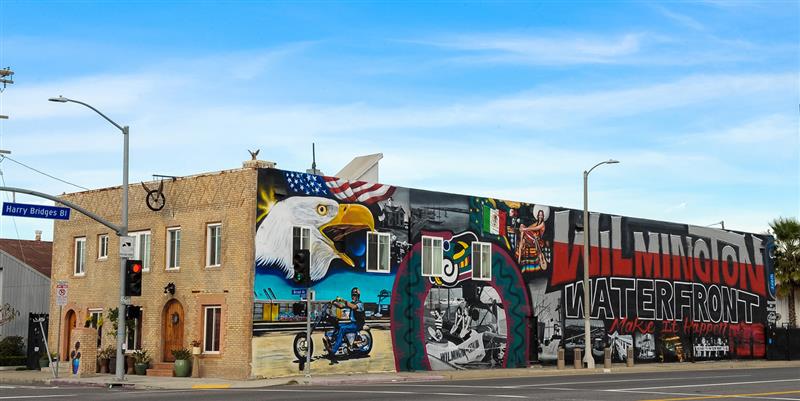
It Couldn’t Be Better with News every Spectrum
Hey,
The weather is rapidly changing. The election is almost over and I hope everyone voted. Next week will be damn exciting. I have confidence in America and as you know, in freedom.
The Bikernet Weekly News is sponsored in part by companies who also dig Freedom including: Cycle Source Magazine, the MRF, Las Vegas Bikefest, Iron Trader News, ChopperTown, BorntoRide.com and the Sturgis Motorcycle Museum. Most recently Quick Throttle Magazine came on board.
Ride fast and free forever!
–Bandit


